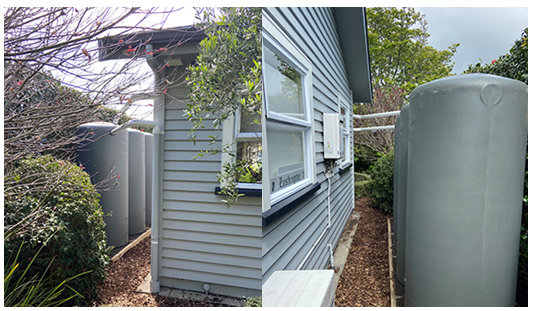Is rainwater harvesting sustainable in New Zealand?
rainwater harvesting Auckland, as the name suggests, is the process of harvesting or collecting rainwater. Typically rainwater is harvested from the roof and stored in a rainwater tank. From there the harvested rainwater is distributed for use in the home or garden.
The good thing about rainwater harvesting is rainwater is free. It just falls from the sky. Anyexcess rainwater just runs off into the drain or down the gutter, so it makes perfect sense to harvest the rainwater and put it to good use.
Obviously, rainwater harvesting requires a good supply of rain. In New Zealand, rain is abundant most of the year, slightly less over the summer months. Most areas of New Zealand have an average rainfall of between 600 and 1600mm of rainfall per year. Auckland in New Zealand’s North Island has an average rainfall of around 1114mm per year, Canterbury has around 650mm per year and the Northlands region of New Zealand has much lower rainfall but still in the range of 100-200mm per month. That equates to a lot of rain with a fairly reliable water supply, making rainwater harvesting and rainwater storage a very reliable proposition in New Zealand.
To look further at the benefits and sustainability of rainwater harvesting in New Zealand we need to consider:
Upfront costs
The upfront cost of installing a rainwater harvesting system is quite low, especially if it is done during the initial building stage. The collection point is the roof of your home so that is existing and requires no further outlay. The spouts transport the water already so instead of rainwater being directed down the drain, it is merely a matter of redirecting it into a rainwater storage system, usually a rainwater tank. It requires very little outlay to redirect the water. A rainwater pump then pumps the water where you need it. The biggest upfront cost is the rainwater tank and rainwater pump. This cost varies depending on the capacity of your rainwater storage system. A possible additional cost is a water filtration system, only applicable if you intend to consume the water.
Maintenance and running costs
Maintenance and running costs are quite minimal as there are very few moving parts. You can easily clean out your rainwater harvesting Canterbury yourself. Your rainwater pump will require servicing from time to time. The cost of this is offset by your lower water bill. To reduce running costs further, consider installing a solar-powered rainwater harvesting pump as well. This will make your home and garden much more sustainable and environmentally friendly.
Adaptability in domestic and agricultural settings
Rainwater harvesting is most common in domestic settings but can easily be adapted to agricultural settings, especially where there is a large roof area on farm sheds and storage sheds. Rainwater and runoff can also be collected in dams and be used for agricultural irrigation.
The effect of rainwater harvesting on groundwater
Rainwater harvesting actually reduces soil erosion and flooding. By collecting the water, excess water is minimised and the amount of flooding and soil erosion is also reduced. This reduces the likelihood of flooding around your home and reduces stormwater runoff. In areas where there is high rainfall, this has very little effect on the ecosystem of nearby streams and rivers.
Rainwater storage
Rainwater storage requires rainwater tanks. There are many different sizes of rainwater tanks. You will need to consider the capacity of your tank when designing a sustainable rainwater collection system.
Rainwater filtration
Rainwater filtration will be necessary if you are planning to consume the water you harvest or if you are planning to recycle the water for delivery in drip irrigation systems. There are many types of rainwater filtration systems available. An irrigation specialist will be able to help you choose the right filtration system for your needs.
Case Study:

In New Zealand Think Water was contracted to design a rainwater harvesting system to top up a swimming pool during the summer months, providing a very sustainable water solution for the homeowner.
https://www.thinkwater.co.nz/water-tank-rainwater-harvesting-system/
In summary, rainwater harvesting is sustainable in New Zealand, particularly in household systems. Making use of a readily available natural resource makes perfect sense, especially when it can help reduce the cost of your water bill and even out any irregularities in your water supply.
The team at Think Water will be able to help you design the right rainwater harvesting system for you, supply you with everything you need and point you in the right direction. They can even install it for you and keep it regularly maintained if you would prefer someone else to do it for you.
Visit your nearest Think Water store at